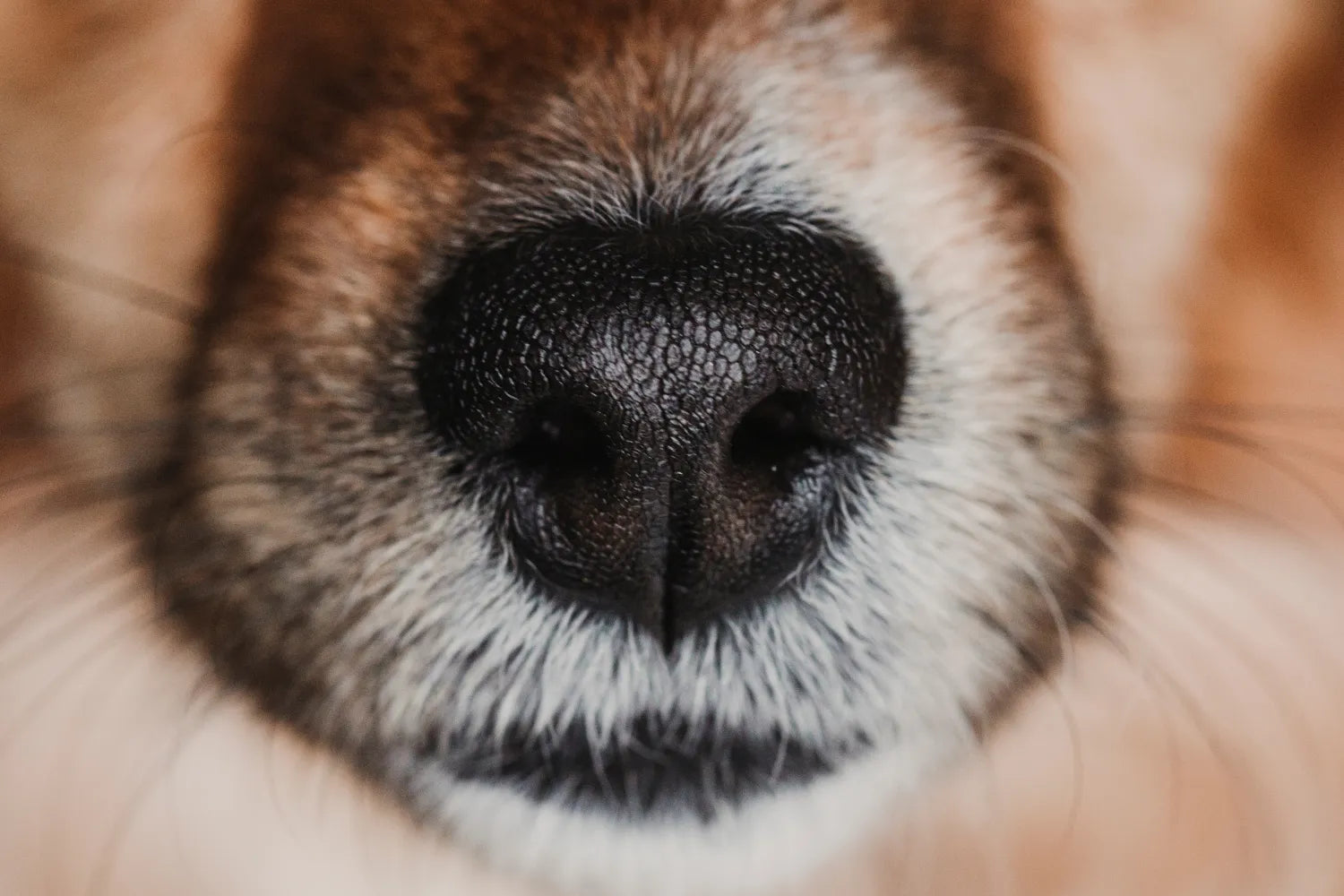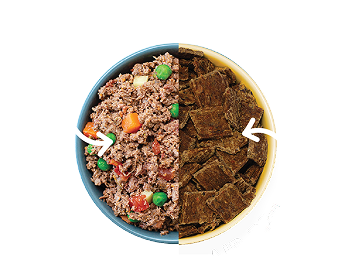
Why Dogs Have Whiskers and How They Use Them
Welcome to the curious world of A Pup Above, where we dig deep into the enigmatic lives of our dogs. Today, we're going to uncover the fascinating reason why dogs have whiskers — and how they use them.
So, if you’ve ever wondered about the superpowers that lie beneath those soft tufts on your pet's face — read on!
What’s the Purpose of Whiskers?
Whiskers, technically known as vibrissae, are not merely decorative. They are sensory powerhouses that provide dogs with a deeper connection to the world around them.
These remarkable hairs are deeply rooted within specialized follicles, richly connected with nerve endings, making them highly sensitive and responsive. When it comes to spatial awareness and navigation, dogs rely on their whiskers to deliver invaluable information.
Acting as delicate antennae, whiskers help dogs determine the size, shape, and texture of objects in their environment. This allows them to skillfully navigate through narrow spaces, judge distances with impeccable precision, and even detect potential threats that might otherwise go unnoticed.
But whiskers do more than just navigate physical spaces. They also play a significant role in sensing changes in air currents.
Have you ever noticed your dog's whiskers twitching ever so slightly? That's their built-in mechanism for perceiving even the slightest shifts in the air. By interpreting these changes, dogs can anticipate movements, detect the presence of nearby creatures, and gain an edge in tracking scents in the surrounding atmosphere.
How Do Dogs Utilize Whiskers?
From guiding their movements to communicating their intentions, dogs make incredible use of their whiskers in various ways. These extraordinary sensory tools enhance their perception and interaction with the world around them.
Here's a closer look at how dogs utilize their whiskers:
Enhancing Social Interactions
Dogs have whiskers not only on their faces but also on their muzzles, chin, and even their eyebrows. These whiskers serve as touch receptors during social interactions, helping dogs gather information about the emotions of other dogs or humans.
When dogs engage in a friendly nose touch or a gentle chin rest, their whiskers come into play, creating a tactile connection that strengthens bonds and communication.
Improving Depth Perception
Dogs can also tap into their whisker finesse to improve their depth perception — especially when their vision is limited. As they delicately brush against objects, the whiskers transmit touch sensations, allowing dogs to gauge the proximity of their surroundings.
This heightened sense of depth empowers dogs to navigate with confidence and precision, whether they're gracefully leaping over obstacles or flawlessly catching airborne frisbees.
Assisting in Hunting
Whiskers serve as vital tools in a dog's hunting toolkit. Their extraordinary sensitivity enables dogs to detect minuscule vibrations and subtle air movements triggered by potential prey.
With their whiskers actively attuned to these sensory cues, dogs become skilled trackers, effortlessly locating and pursuing their targets. This invaluable information supercharges their hunting prowess, ensuring heightened efficiency and success in the wild.
Expressing Emotions
Dogs don't need words to say how they feel; their whiskers do a fine job of broadcasting their emotions. A set of relaxed whiskers? That's a dog in chill mode.
But watch out when those whiskers tense up and push forward — it's alert time, possibly signaling a mix of curiosity and caution.
Safeguarding Sensitive Areas
Lastly, whiskers act as protective sensors for a dog's eyes and face. When exploring tight spaces or brushing past vegetation, the whiskers trigger a blink reflex to protect the eyes from potential harm.
They can also signal when an object is too close to the face, helping to avoid injuries. This protective mechanism ensures that dogs can explore their environment safely, keeping their delicate eyes and faces shielded from danger.
Should You Trim Whiskers?
Trimming or removing a dog's whiskers may seem harmless, but it's far from it. Whiskers are not just hair — they're an integral part of a dog's sensory apparatus.
Removing them can lead to disorientation, decreased spatial awareness, and a diminished ability to navigate their surroundings safely. It can also impair their ability to assess threats, potentially making them more anxious or less confident.
Whiskers are their tactile guide in the dark and their tool for interpreting the world; without them, dogs are missing a critical piece of their natural abilities.
Keeping Whiskers in Tip-Top Shape
Ensuring your dog's whiskers remain healthy and functional is an important aspect of their overall care.
Here are some tips to keep those vital sensors in prime condition:
Embrace the Natural
First and foremost, let whiskers be. These sensory hairs are there for a reason, and trimming or cutting them can disorient your dog, making navigation and sensing the environment challenging.
Emphasizing the importance of this to everyone in your household ensures your dog's whiskers remain untouched and fully functional.
Gentle Grooming Is Key
When grooming your dog, be cautious around their whisker area. Use a soft brush and avoid direct contact with the whiskers to prevent any accidental pulling or cutting. If you visit a professional groomer, make sure to specify that you'd like the whiskers left alone.
Mindful Handling
During cuddle time or play, be mindful of your dog's whiskers. Avoid grabbing or pulling at your dog's face to keep those sensitive hairs intact. Educating children on gently petting and respecting the dog's space can also help protect these delicate sensors.
Proper Feeding Accessories
Choose wide, shallow bowls for food and water to prevent whisker fatigue — a condition caused by constant pressure on the whiskers from deep bowls. This simple switch can make mealtime much more comfortable for your dog.
Check for Damage
Regularly check your dog's whiskers for any signs of damage or breakage. While whiskers do naturally shed and regrow, frequent breakage might indicate an issue with their environment or how they're being handled.
Create a Whisker-Friendly Space
Ensure your home is safe for exploration, with enough room for your dog to navigate without constantly bumping their whiskers into furniture or walls. A spacious and obstacle-free area allows your dog to use their whiskers without restraint, enhancing their ability to interact with their surroundings.
Veterinary Visits
During your dog's regular check-ups, ask your vet to examine their whiskers as part of their overall health assessment. This can help identify any potential issues affecting the whiskers or the skin around them.
Nutrition Matters
Just as a nutritious diet supports overall health, it also plays a role in maintaining healthy whiskers. Ensure your dog's diet includes all the necessary nutrients to support skin and hair health, fostering strong and resilient whiskers.
A Final Word
At A Pup Above, our journey into the lives of dogs goes beyond providing them with nutritious meals — we dive deep into the essence of what makes our dogs tick, celebrating every quirk and curiosity.
Understanding the significance of whiskers has opened up a new perspective on the nuanced ways dogs perceive their world. It's a reminder of the intricate bond we share with them and the importance of attentive care.
As we continue to explore and share these canine curiosities, our goal remains to enrich the lives of dogs and their owners alike, fostering a deeper appreciation and love for our pups.
Sources:
Why Do Dogs Have Whiskers? | AKC
Can Dogs Sense Storms? | HowStuffWorks
Why Do Dogs Have Whiskers? | VCA Animal Hospital
The Surprising Reasons Why Dogs Have Whiskers | Psychology Today
Top Stories

Why Do Dogs Lick Their Paws?

Why Do Dogs Whimper & Make Noises in Their Sleep?

Healthy Vet-Approved Homemade Dog Food Recipes

How To Cook Sweet Potatoes for Dogs






















